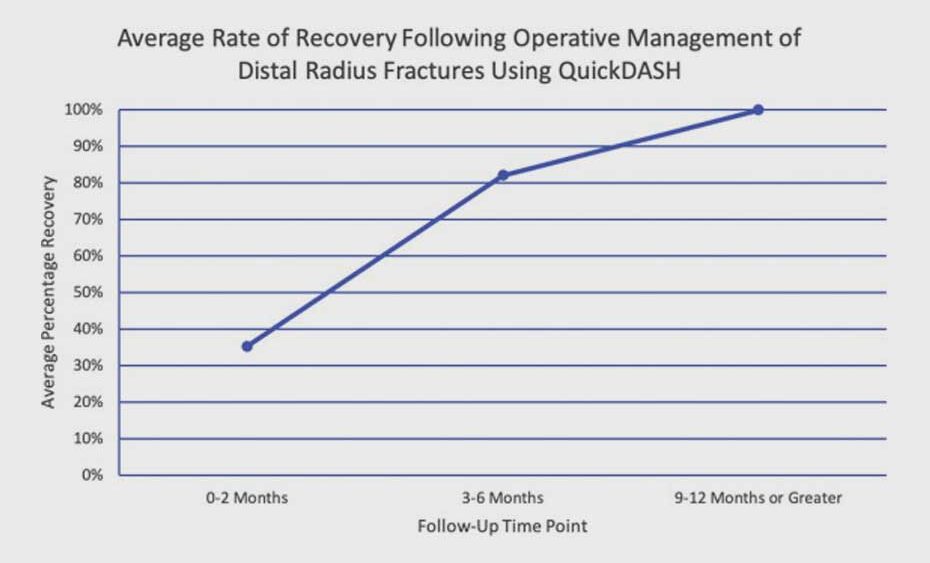(A recent article featured in the Journal of Hand Surgery Global Online examines the QuickDASH model in assessing recovery following distal radius fractures.)
There is a paucity of literature examining the trajectory of meaningful clinical improvement after distal radius fracture (DRF) fixation. We sought to answer the following questions: (1) When do patients meet the minimum clinically important difference (MCID) in the Quick–Disabilities in Arm, Shoulder, and Hand questionnaire (QuickDASH) score change after DRF fixation? (2) What gains in terms of number of MCIDs achieved (as measured by QuickDASH) do patients make as they recover from DRF fixation? (3) What patient and injury factors are characteristic of patients who meet or do not meet the average recovery trajectory?
Overall, 96% of patients undergoing DRF fixation will achieve one QuickDASH MCID by 1 year after surgery. Patients achieved over 80% of total expected functional improvement by 3 to 6 months after surgery, which appeared to be irrespective of age, sex, or body mass index.
Source: jhsgo.org



Comments are closed.